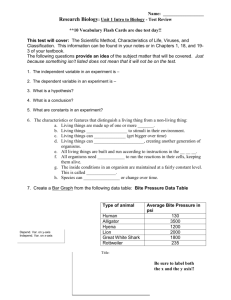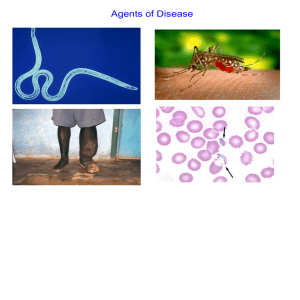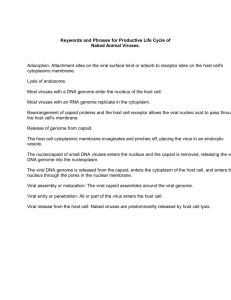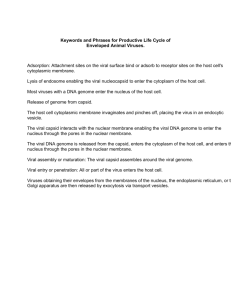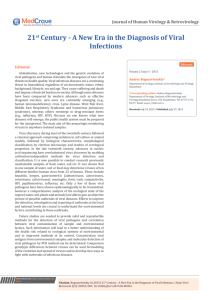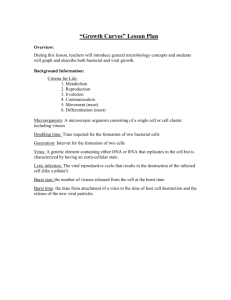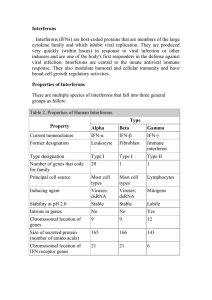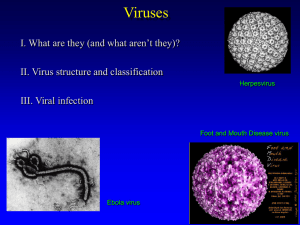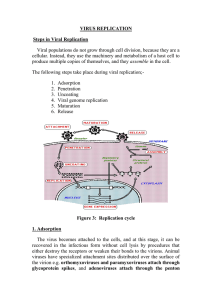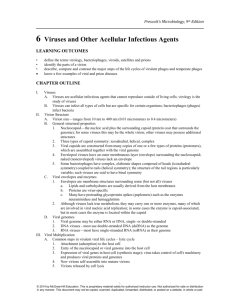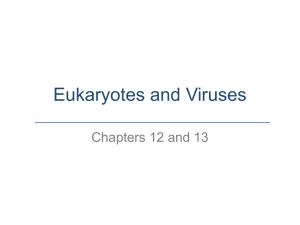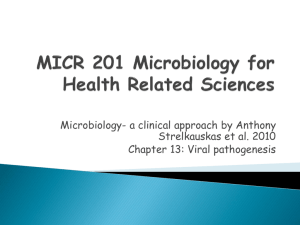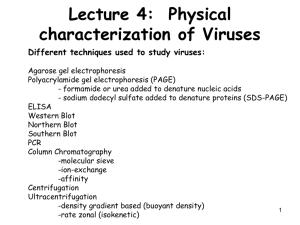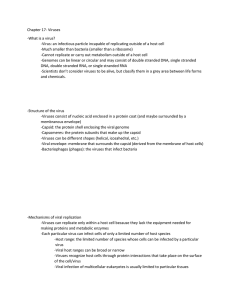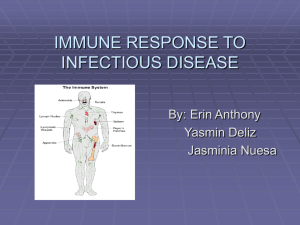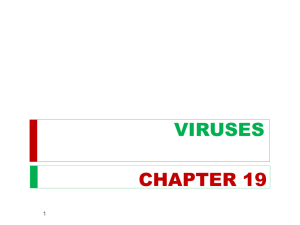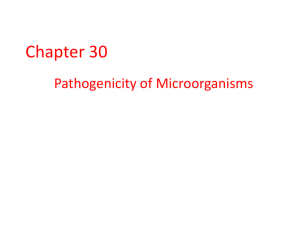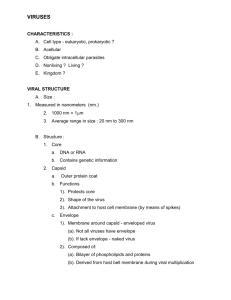Microbiology Chapter 13 Exam Study Guide
advertisement
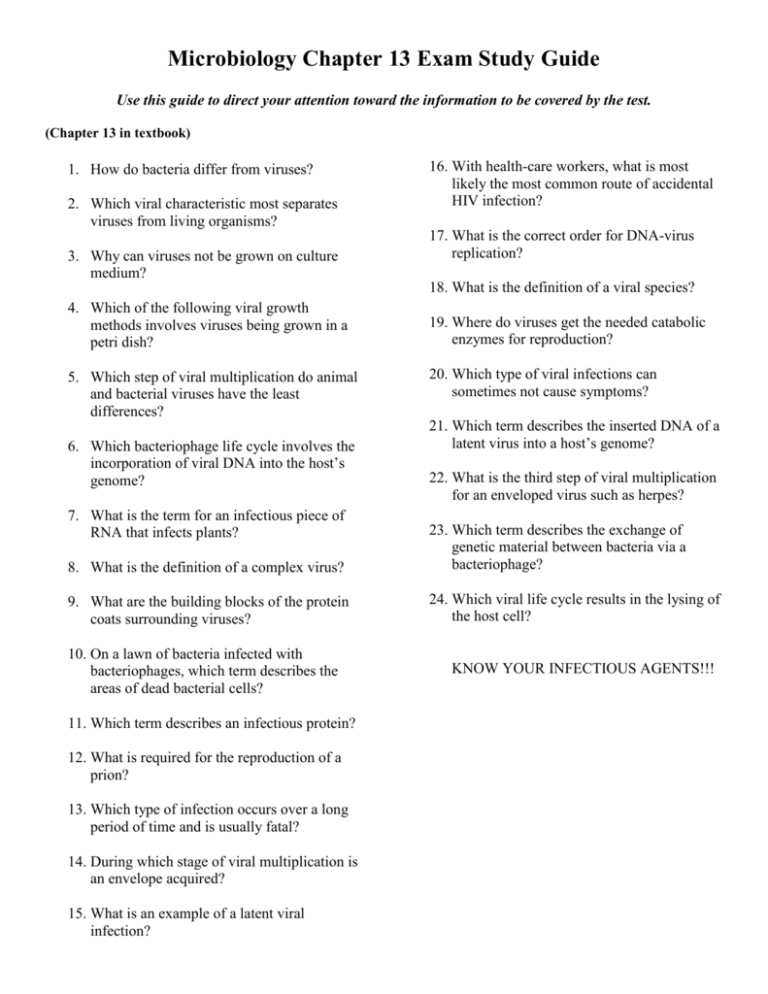
Microbiology Chapter 13 Exam Study Guide Use this guide to direct your attention toward the information to be covered by the test. (Chapter 13 in textbook) 1. How do bacteria differ from viruses? 2. Which viral characteristic most separates viruses from living organisms? 3. Why can viruses not be grown on culture medium? 16. With health-care workers, what is most likely the most common route of accidental HIV infection? 17. What is the correct order for DNA-virus replication? 18. What is the definition of a viral species? 4. Which of the following viral growth methods involves viruses being grown in a petri dish? 5. Which step of viral multiplication do animal and bacterial viruses have the least differences? 6. Which bacteriophage life cycle involves the incorporation of viral DNA into the host’s genome? 7. What is the term for an infectious piece of RNA that infects plants? 19. Where do viruses get the needed catabolic enzymes for reproduction? 20. Which type of viral infections can sometimes not cause symptoms? 21. Which term describes the inserted DNA of a latent virus into a host’s genome? 22. What is the third step of viral multiplication for an enveloped virus such as herpes? 8. What is the definition of a complex virus? 23. Which term describes the exchange of genetic material between bacteria via a bacteriophage? 9. What are the building blocks of the protein coats surrounding viruses? 24. Which viral life cycle results in the lysing of the host cell? 10. On a lawn of bacteria infected with bacteriophages, which term describes the areas of dead bacterial cells? 11. Which term describes an infectious protein? 12. What is required for the reproduction of a prion? 13. Which type of infection occurs over a long period of time and is usually fatal? 14. During which stage of viral multiplication is an envelope acquired? 15. What is an example of a latent viral infection? KNOW YOUR INFECTIOUS AGENTS!!!

